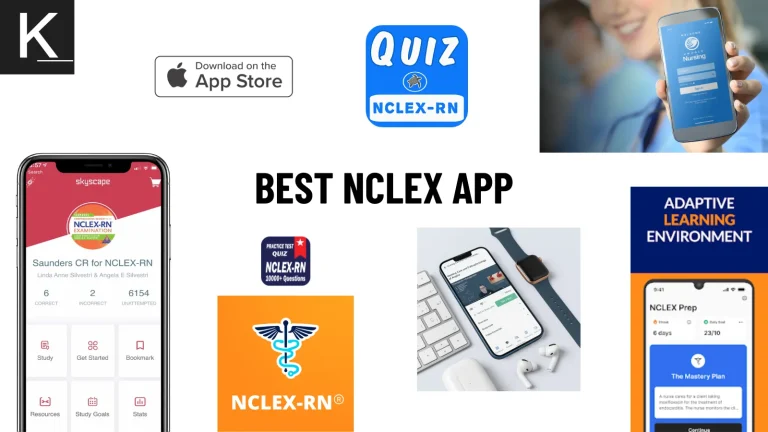Are you studying for the NCLEX and wondering about the different NCLEX question types you will encounter on the test? If so, you’re in the right place!
I’m here to guide you through the various questions on your nursing exam, help you understand them, and give you tips on tackling each one effectively. Let’s dive in now!
NCLEX Question Types
The NCLEX tests your knowledge and clinical judgment skills through various question types. If you understand them thoroughly, you can approach the exam more confidently and improve your chances of success.
Now, I will discuss the common questions you may encounter when taking the NCLEX exam and tips for tackling them. Keep reading!
1. Multiple Response
Multiple-response questions are ones where more than one answer may be correct. The challenge here lies in identifying all the correct answers, not just one.
When tackling these questions, you must read them carefully and understand what they ask. Avoid rushing to select the first correct answer you see.
Instead, evaluate all the options given, as there may be several correct responses. Practice is critical to mastering this question type.
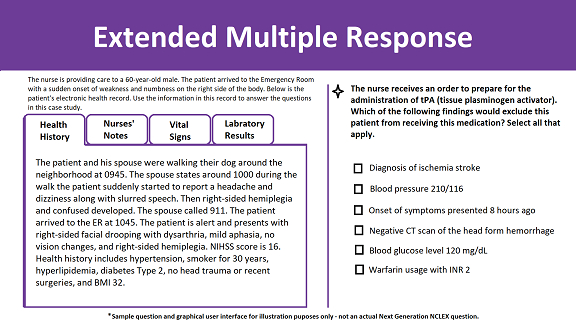
2. Multiple Choice
Multiple choice questions are the most common type of question on the NCLEX. They consist of a stem (the question) and several options, with only one correct answer.
The best strategy for tackling these questions is to read the question thoroughly first, then try to answer it in your head before looking at the options.
This method prevents you from getting swayed by the wrong choices. If you are unsure, use the process of elimination to narrow down the possibilities
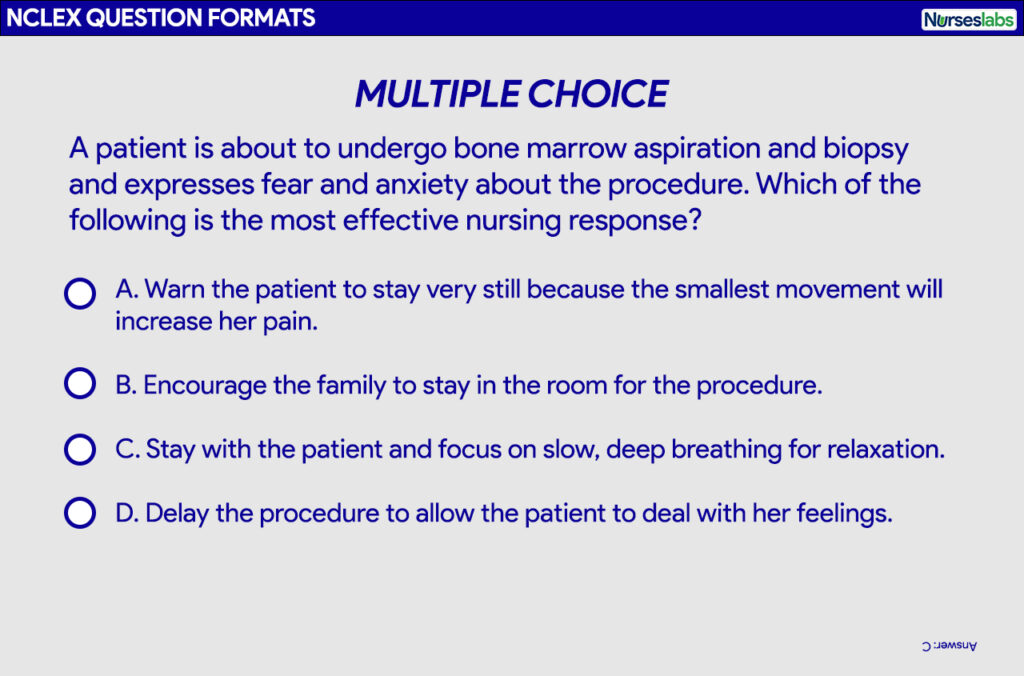
3. Ordered Response
Ordered response questions require you to order or rank the answers in a specific sequence. These questions test your prioritization skills and are common in sections like patient safety.
To tackle these questions, draw from your knowledge of nursing priorities, like the ABCs (Airway, Breathing, and Circulation). Generally, life-threatening conditions should be prioritized first.
Practice using NCLEX review books or online resources to understand this question type better.
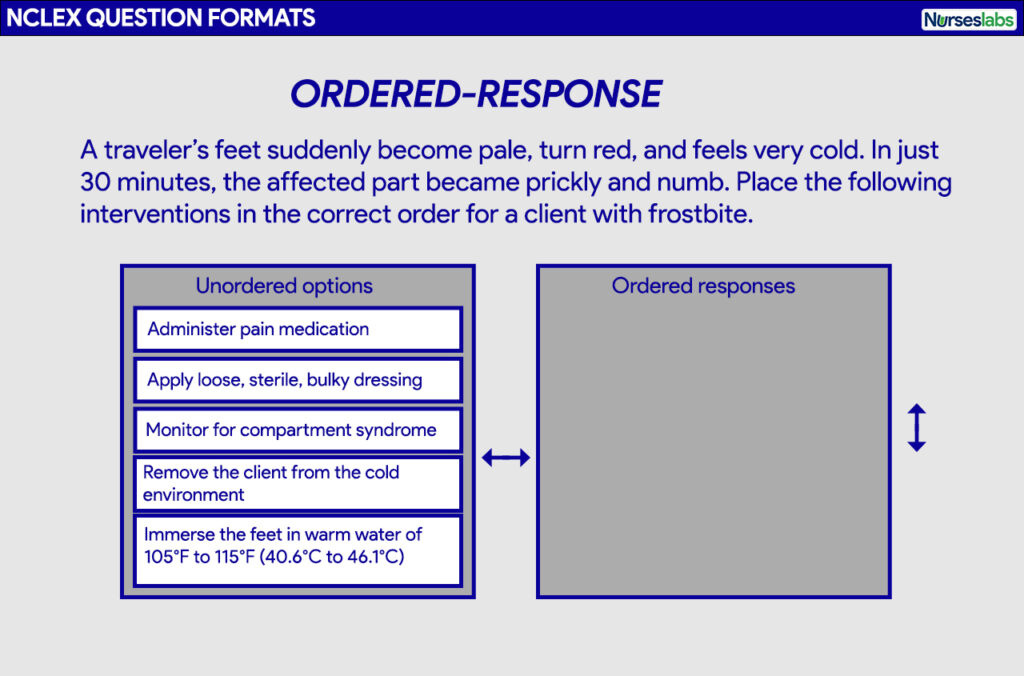
4. Matrix
Matrix or grid questions are alternate format questions on the NCLEX. They require you to select answers within a grid or table. They test your ability to understand and apply multiple concepts simultaneously.
The strategy to tackle these questions is to read the instructions carefully, understand what each row and column in the grid represents, and take your time to consider all possible options before making a selection.
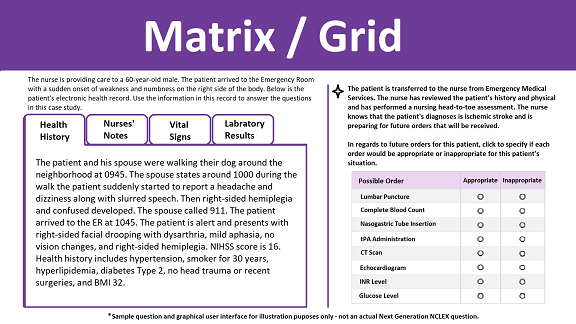
5. Drag And Drop
Drag and drop questions are another common type of NCLEX question. They require the candidates to place the answers in a specific order or to match items. They test your ability to apply knowledge in a practical scenario.
A helpful strategy to handle these questions is to analyze all the options first and understand their interrelations. Then, based on the question, arrange or match the items.
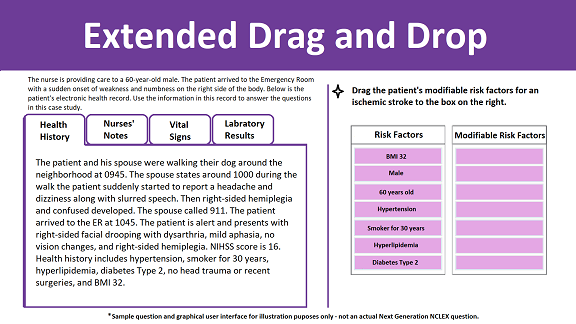
6. Chart
Chart questions on the NCLEX provide a chart of information and require you to interpret the data to answer the question. These questions assess your ability to analyze and apply data to a clinical scenario.
To approach these questions, review the chart carefully, then read the question and determine what specific information you need from the chart to answer it.
Practice is key. If you encounter more chart questions during your study, you will be more comfortable with this type of question on the exam.
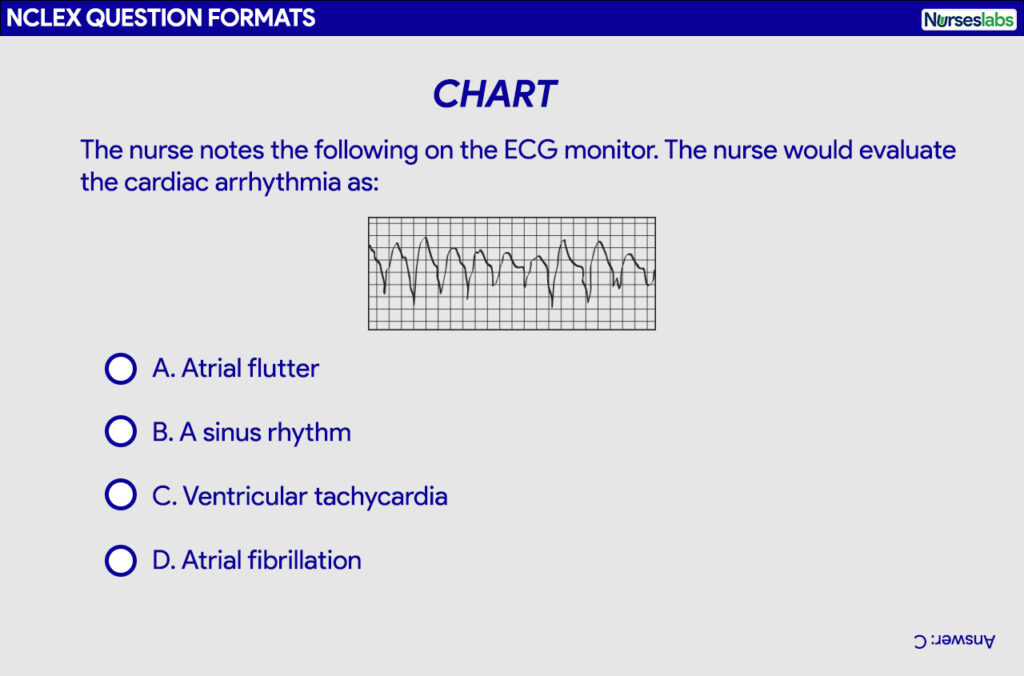
7. Graphics Questions
Graphics questions are a unique type of NCLEX questions that require you to interpret a graphic or a picture to answer. It can be a chart, a graph, a photo, or other visual representation.
While these questions can initially be intimidating, understanding the underlying concept is vital. Break down the graphics into smaller portions and analyze each part. Try to understand the story the graphic is telling.
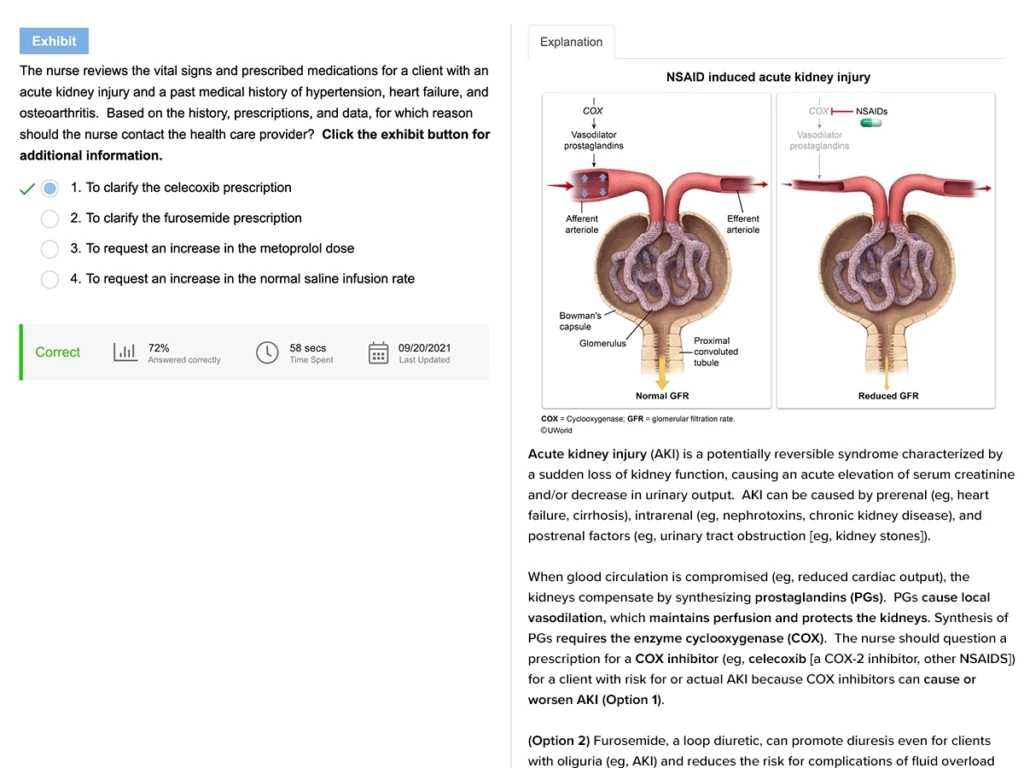
8. Bow Tie
Bow-tie questions involve a scenario presented in a “bow-tie” format. The question presents a clinical situation, with the “knot” of the bow tie representing the critical point or problem. The “ends” of the bow tie represent the cause and effect or actions and outcomes.
To tackle these questions, focus on the critical point and think logically about the causes and effects. Apply your nursing knowledge and make educated guesses if necessary.
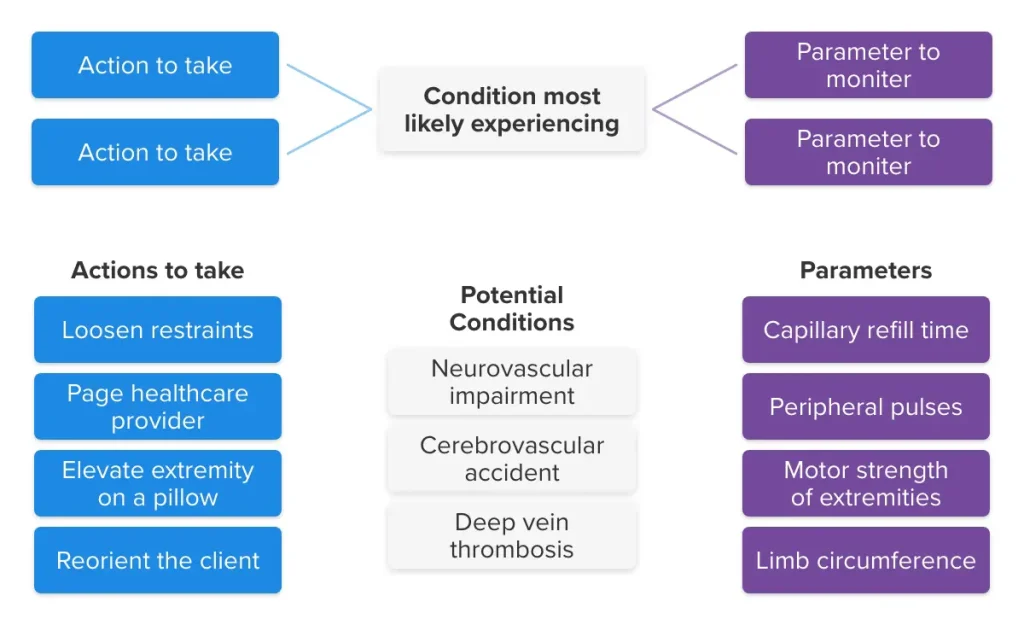
9. Fill In The Blank
Fill-in-the-blank questions are precisely what they sound like. Instead of multiple-choice options, you are given a blank space to provide your answer. These questions test your recall and understanding of specific facts or procedures.
To handle these questions, make sure you have thoroughly reviewed and memorized vital facts, definitions, and procedures. Trust your knowledge, and don’t second-guess yourself.
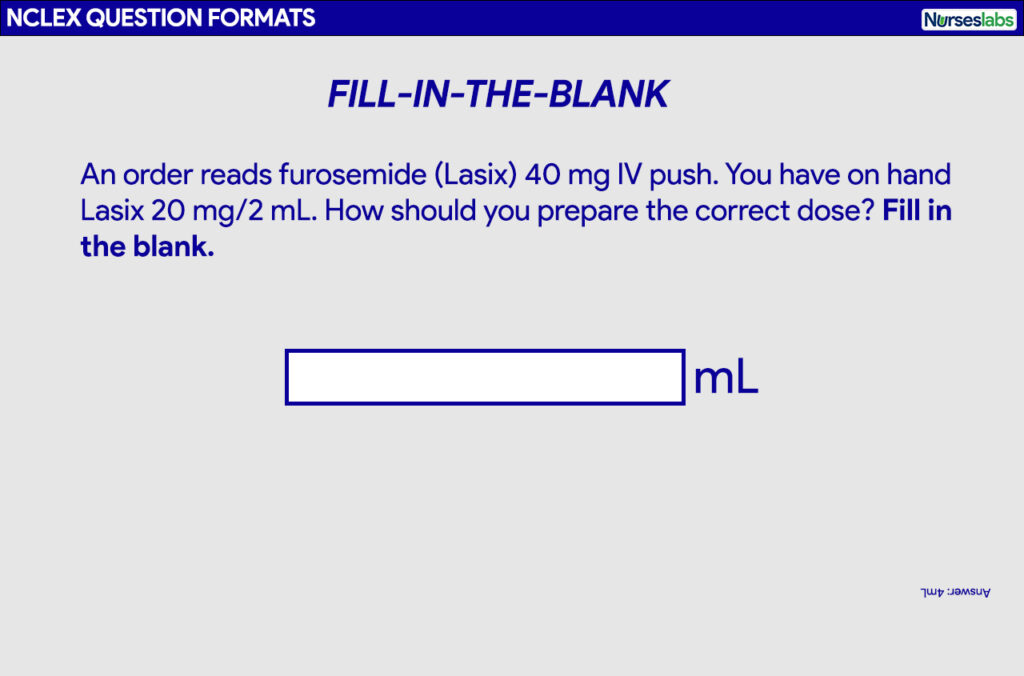
10. Audio Questions
Audio questions are unique to the NCLEX, requiring you to listen to a heart or lung sound and interpret what you hear.
Succeeding in these questions requires understanding the sounds you might hear, from crackles and wheezes to murmurs and rubs.
I recommend practicing with an audio resource providing different sounds with corresponding conditions. You must listen carefully and understand the context of the question before deciding.
11. Enhanced Hotspot
Enhanced hotspot questions require identifying a particular area on a graphic image. They test your ability to apply your knowledge in a visual context.
I suggest thoroughly understanding anatomy and various conditions to tackle these questions. Take time to analyze the image, consider the information in the question, and apply your knowledge accordingly.
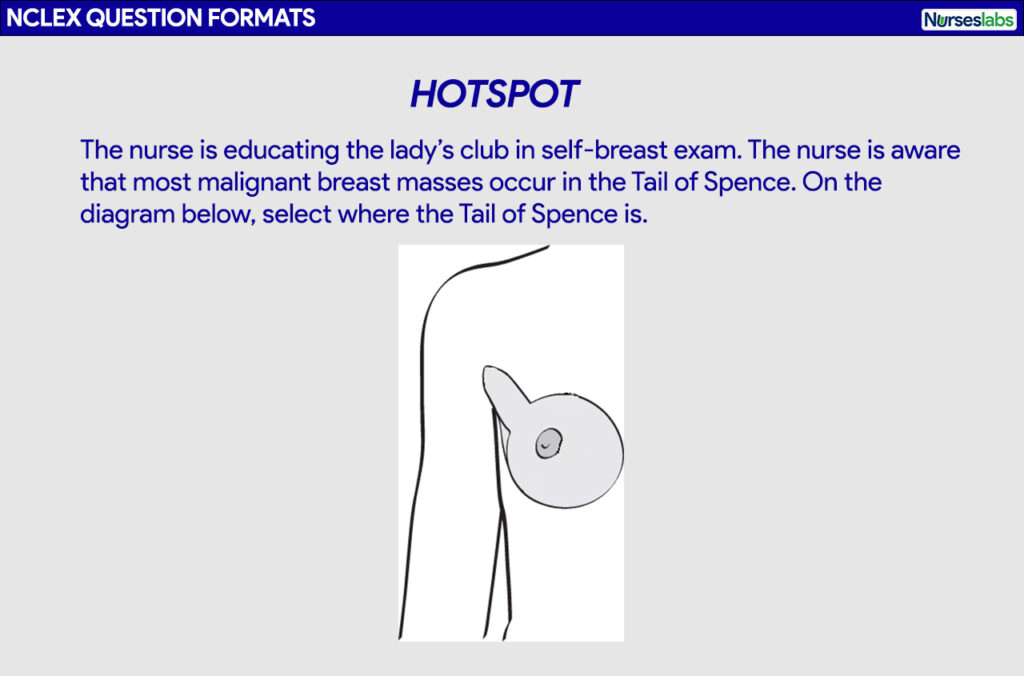
12. Cloze Test
The Cloze test question involves completing a sentence with a word or short phrase. These questions assess your ability to comprehend, apply, analyze, and evaluate information. It’s much the same as fill-in-the-blank questions.
Tackling these questions requires a solid understanding of the topic and the ability to use contextual clues. You must read the entire question carefully before attempting to answer. If you are unsure, try to eliminate the options that don’t fit within the context.
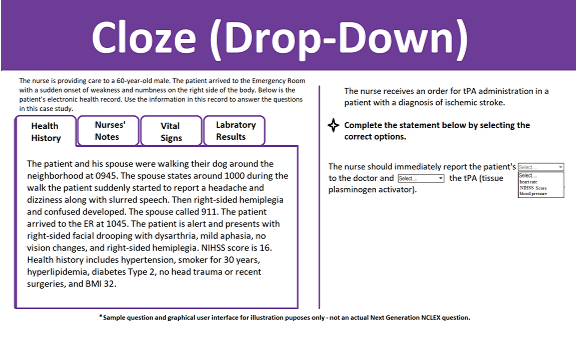
13. Trend Question
Trend questions require you to identify changes or progressions in a patient’s condition over time. These questions assess your clinical judgment and knowledge of pathophysiology to predict a disease’s progression or treatment response.
If you want to handle these questions, understand the normal progression of diseases and the expected responses to various treatments.
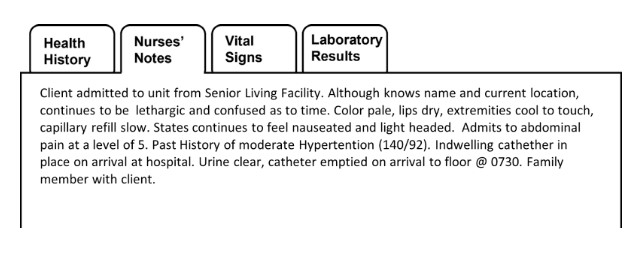
14. Highlight Question
Highlight questions are relatively new to the NCLEX. They require you to highlight the text area containing the correct answer. These questions test your ability to identify relevant information in a text.
To tackle these, you must carefully read and understand the given text. Highlight the portion of the text that directly answers the question. Be sure not to highlight more than needed, as it may lead to a wrong answer.
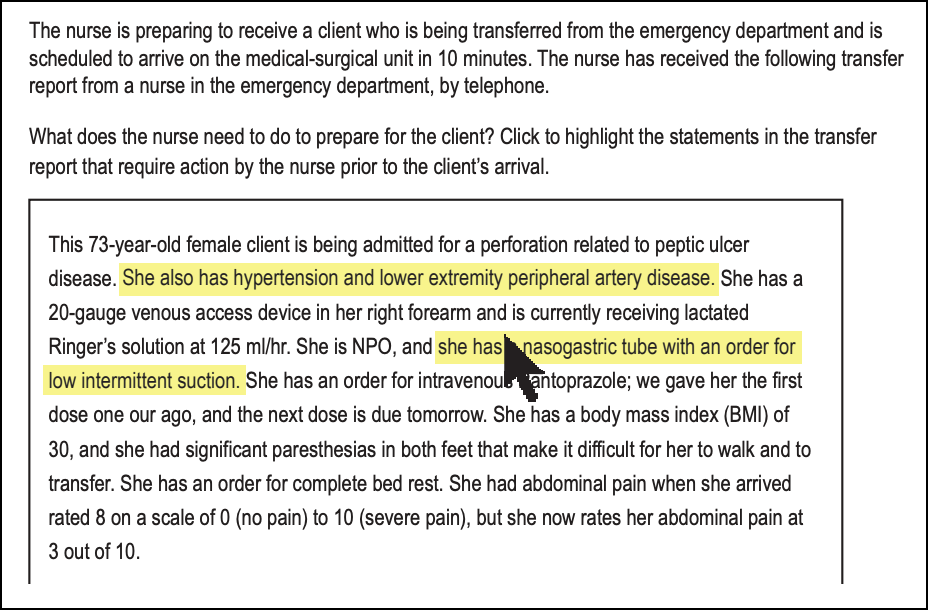
Sources: NCSBN & Others research
How To Analyze NCLEX Questions?
Some candidates find the NCLEX questions challenging. Here are some tips to analyze and break them down:
Step 1: Understand the question format
The NCLEX consists of multiple-choice questions but includes alternate item formats, such as hot spot and ordered response. So, you must understand the structure of these questions.
Step 2: Identify key information
Every NCLEX question contains critical information to guide you to the correct answer. It can be the patient’s medical history or current symptoms. You must read the question carefully and identify key terms. Then, use them to eliminate incorrect answer choices.
Step 3: Apply critical thinking
You can use elimination strategies to weed out incorrect answers. Look for extreme, vague, or irrelevant options to the question stem. When applying critical thinking, consider the patient’s safety first, recall your nursing knowledge, and apply it to the scenario.

Wrapping Up
There are different NCLEX question types, such as multiple choice, fill-in-the-blank, chart, drag-and-drop, trend, and graphics questions.
You must understand these question types, familiarize yourself with each, and develop a strategy for tackling them. Practice is the best way to prepare. Start practicing today and ace your nursing exam!


